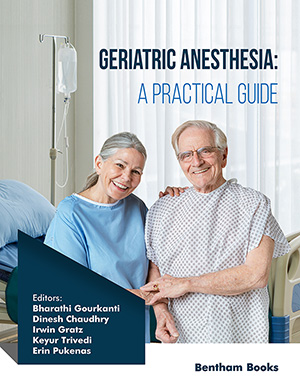Abstract
Objective: This study was to investigate the potential protective effects of curcumin in cerebral ischemia-reperfusion (CIR) and its regulation of miR-7.
Methods: Rats were occluded by middle cerebral artery occlusion (MCAO) for 1.5 h and reperfused for 2 h to establish a local CIR model. After 24 hours of model establishment, MCAO rats were given curcumin for 3 days by intragastric administration. PC12 cells were cultured for 6 h in oxygen-glucose deprivation medium and then reoxygenated for 24 h to establish an oxygenglucose deprivation/reoxygenation (OGD/R) model. The OGD/R model cells were treated with curcumin for 48 h.
Results: Curcumin inhibited the decrease of miR-7-5p expression and an increase of RelA p65 expression induced by CIR and ODG/R. RelA p65 was a target of miR-7-5p. MiR-7-5p antagonists were able to counteract the effect of curcumin on the expression of RelA p65 in ischemic brain tissue of MCAO rats and OGD/R model cells. Curcumin improved OGD/R-induced inhibition of cell activity, necrosis and apoptosis. Curcumin significantly reduced the levels of tumor necrosis factor (TNF)-α, interleukin (IL)-6, IL-1β, reactive oxygen species (ROS) and malondialdehyde (MDA) and increased the activity of superoxide dismutases (SOD) and catalase (CAT) in OGD/R-induced cells. Curcumin may inhibit OGD/R-induced cell damage by regulating miR-7-5p. Curcumin improved cerebral infarction, nerve damage and cognitive dysfunction in rats with CIR, which may be related to the regulation of miR-7-5p/RelA p65 axis.
Conclusion: Curcumin exerts cerebral protection by attenuating cell necrosis and apoptosis, inflammatory response and oxidative stress following CIR, which may be related to its regulation of the miR-7/RELA p65 axis.
Keywords: Cerebral ischemia-reperfusion, oxygen-glucose deprivation/reoxygenation model, curcumin, miR-7-5p/RelA p65 axis, middle cerebral artery occlusion, tumor necrosis factor.
[http://dx.doi.org/10.1038/s41598-018-23929-8] [PMID: 29615782]
[http://dx.doi.org/10.1039/C7FO01242J] [PMID: 29206254]
[http://dx.doi.org/10.1371/journal.pone.0059843] [PMID: 23555802]
[PMID: 31185140]
[http://dx.doi.org/10.1016/j.brainres.2008.06.117] [PMID: 18640105]
[http://dx.doi.org/10.1007/s11064-009-0065-y] [PMID: 19774461]
[http://dx.doi.org/10.1016/j.ejphar.2006.12.028] [PMID: 17303117]
[http://dx.doi.org/10.1016/j.jocn.2009.10.009]
[http://dx.doi.org/10.1161/STROKEAHA.107.500736] [PMID: 18258830]
[http://dx.doi.org/10.1158/1940-6207.CAPR-11-0267] [PMID: 21836020]
[http://dx.doi.org/10.1080/13880209.2017.1297838] [PMID: 28264607]
[PMID: 23559849]
[http://dx.doi.org/10.1161/01.STR.20.1.84] [PMID: 2643202]
[http://dx.doi.org/10.1161/STROKEAHA.111.000504] [PMID: 23613494]
[http://dx.doi.org/10.1111/j.1471-4159.2008.05645.x] [PMID: 18752642]
[http://dx.doi.org/10.1016/j.bbrc.2018.04.208] [PMID: 29709474]
[http://dx.doi.org/10.1371/journal.pone.0072370] [PMID: 23991100]
[http://dx.doi.org/10.1038/nprot.2006.116] [PMID: 17406317]
[http://dx.doi.org/10.1371/journal.pone.0147231] [PMID: 26871437]
[http://dx.doi.org/10.1007/s12264-012-1273-z] [PMID: 23054633]
[PMID: 8142617]
[http://dx.doi.org/10.2174/092986708783330665] [PMID: 18220759]
[http://dx.doi.org/10.1186/s12906-017-1739-7] [PMID: 28449676]
[http://dx.doi.org/10.1016/j.lfs.2003.06.042] [PMID: 14672754]
[http://dx.doi.org/10.1080/08941939.2017.1376131]
[http://dx.doi.org/10.1097/00004647-199603000-00003] [PMID: 8594050]
[http://dx.doi.org/10.1038/sj.gt.3301676] [PMID: 11960318]
[http://dx.doi.org/10.2147/TCRM.S141738] [PMID: 28894373]
[http://dx.doi.org/10.1016/j.bbr.2017.06.027] [PMID: 28851669]
[http://dx.doi.org/10.1042/BSR20171562] [PMID: 29540536]
[http://dx.doi.org/10.1111/j.1745-7254.2007.00651.x] [PMID: 17883952]
[PMID: 26927554]
[http://dx.doi.org/10.1016/j.pbb.2013.10.008] [PMID: 24141173]
[http://dx.doi.org/10.1074/jbc.M203895200] [PMID: 12121989]
[http://dx.doi.org/10.1002/mnfr.200900265] [PMID: 20169580]
[http://dx.doi.org/10.1016/j.biopha.2016.11.057]
[http://dx.doi.org/10.3892/etm.2017.4874] [PMID: 28912849]
[http://dx.doi.org/10.1074/jbc.M804280200] [PMID: 19073608]
[http://dx.doi.org/10.1371/journal.pone.0090096] [PMID: 24594984]
[http://dx.doi.org/10.1002/hep.25576] [PMID: 22234835]
[http://dx.doi.org/10.1016/j.nbd.2009.12.021] [PMID: 20053374]
[http://dx.doi.org/10.1128/MCB.20.5.1626-1638.2000] [PMID: 10669740]
[http://dx.doi.org/10.1016/S0304-3940(00)01203-9] [PMID: 10869812]
[http://dx.doi.org/10.1097/01.WCB.0000059566.39780.8D] [PMID: 12771574]
[http://dx.doi.org/10.1161/01.STR.0000120732.45951.26] [PMID: 14988572]
[http://dx.doi.org/10.1097/00004647-200102000-00008] [PMID: 11176282]
[http://dx.doi.org/10.1016/j.bbrc.2007.09.115] [PMID: 17936246]
[http://dx.doi.org/10.1038/s41598-018-28500-z] [PMID: 29991690]
[PMID: 28236616]
[PMID: 28624894]
[http://dx.doi.org/10.1371/journal.pone.0071130] [PMID: 23940701]
[http://dx.doi.org/10.1002/brb3.790] [PMID: 28948084]






























